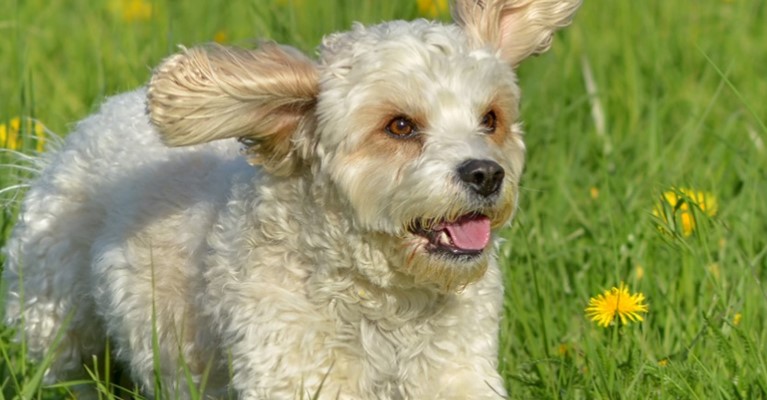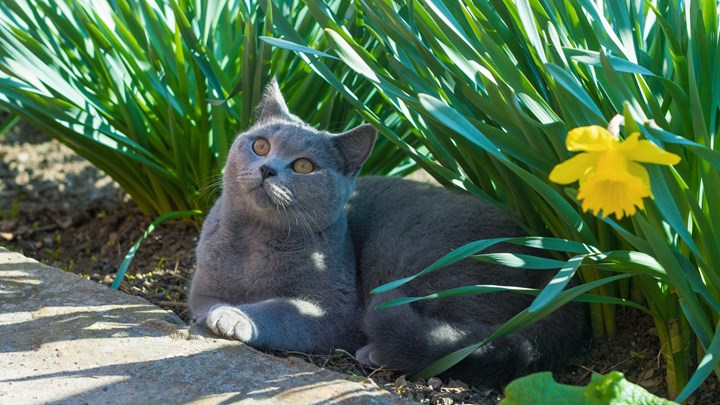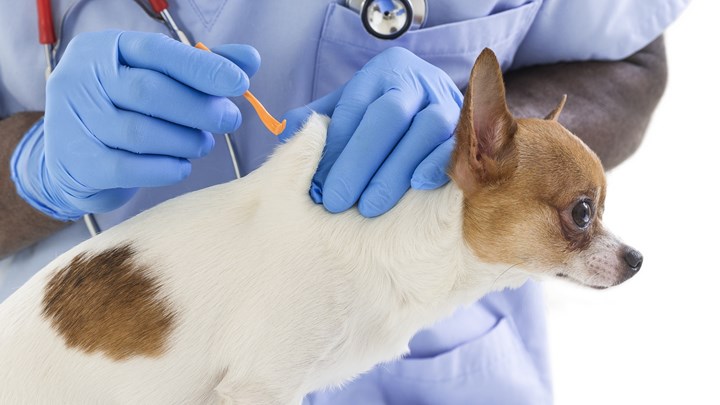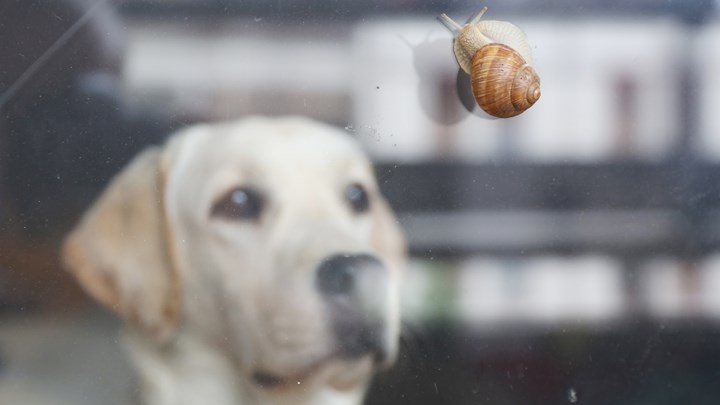Top 5 Springtime Safety Tips for Pets

Spring is one of the most beautiful times of the year, but the season comes with potential dangers to be mindful of for the sake of our pets. From toxic plants and open windows, to fleas and ticks, there are a range of risks for our four-legged friends during spring.
Here at Asda Money, we want to help keep your pets safe too, so here are 5 of the most common hazards that could cause problems for cats and dogs during spring.
Toxic Plants
Plants are one of the most common hazards for cats and dogs during springtime. Although they can look pretty around the house, some of these plants can be extremely toxic to our pets. One of the most popular flowers in spring that can be dangerous for pets to consume are daffodils, and particularly the bulbs, as they contain the majority of the toxins that will make your pet poorly. If your cat or dog eats daffodils, it may cause vomiting, diarrhoea and tiredness. Other toxic plants to be mindful of are tulips, lilies, azaleas, rhododendrons, bluebells and ivy.

Warmer Weather
For many, one of the best things about spring is the warmer weather in comparison to the winter months. However, with these sunnier climates now in full swing, pets will need a lot more water to keep them hydrated.
It’s common knowledge that you shouldn’t leave your pets in a car on their own, but this is all the more important in spring and summer. Even if it doesn’t feel that hot to you, the heat inside the car will be a lot more intense. According to the RSPCA, a car at 22°c can reach up to 47°c within an hour, so to avoid heatstroke, or even worse, it’s best to avoid leaving your pet in a car.
If you’re travelling in a car with your pet on a warm day, you shouldn’t let them pop their head out of the window to get some air. Instead, to be safe, keep the window halfway up, which will still allow them to get enough air and enjoyment, without the potential issue of them jumping out. The Highway Code states that drivers need to ‘make sure dogs or other animals are suitably restrained so they cannot distract you while you are driving or injure you, or themselves, if you stop quickly.’
Fleas and Ticks
Although fleas and ticks are present all year round, these irritating parasites are more popular in spring. Flea and tick season starts around May, and continues until the end of the summer. As well as being annoying and uncomfortable for your pet, fleas and ticks can also be dangerous. They can cause a range of diseases, illnesses and infections, such as tapeworms, anaemia, Lyme disease and Rocky Mountain spotted fever.
The most common treatment to prevent ticks and fleas is liquid medication, which you can apply directly to your pet’s skin, or monthly flea control products. You can remove ticks and fleas by using a tick removal tool and a flea comb. However, it’s important to ensure you get the full body of the tick out when removing it from your pet, to prevent the risk of infection. If you’re worried about doing it yourself, you should visit your vet and they will help.
Keeping your pet away from long grass, treating your garden with pesticides, and hoovering your house regularly will all help to reduce ticks and fleas too. Another great way to prevent ticks and fleas is to continue treatment throughout the winter months.

Spring Cleaning
As the weather gets warmer and the flowers start to grow, many people choose this time to give their homes a deep clean, which is often referred to as the annual ‘spring clean’. However, when cleaning your home, it’s important to keep all cleaning products out of reach of your pets.
Most cleaning products contain chemicals that can be harmful to both cats and dogs, such as bleach and chlorine. Before using any products, be sure to read the label to see if they’re safe to use around your pets. If you have any wet surfaces, make sure that they’re dry before allowing your furry friend back into the room. If your pet does come into contact with cleaning products, reaction symptoms to look out for include red, blistering skin, severe drooling, lack of appetite, fever, tiredness and watery eyes. If you spot any of these symptoms, take your pet to the vet straight away.
Slugs and Snails
Slugs and snails are active all year round, but they become a lot more common in spring. As well as eating our lovely flowers and plants, they can also be potentially hazardous to our pets. Lungworm is one of the most serious diseases to be aware of when it comes to these creepy crawlies. From eating a slug or snail to simply picking up a toy that one has crawled on, it’s important to be mindful of the potential dangers these critters can cause, and to try and prevent contact as much as possible.
However, although you may want to remove these pests from your property using pesticides, many slug and snail pellets are extremely dangerous for our four-legged friends as they contain the toxic ingredient metaldehyde. Some symptoms of eating poisonous slug repellents include incoordination, muscle spasms, twitching and seizures. So, it’s always advised to seek veterinary advice immediately if you suspect your pet has consumed such products. Luckily, there are many slug and snail pellets available that are pet-friendly.
